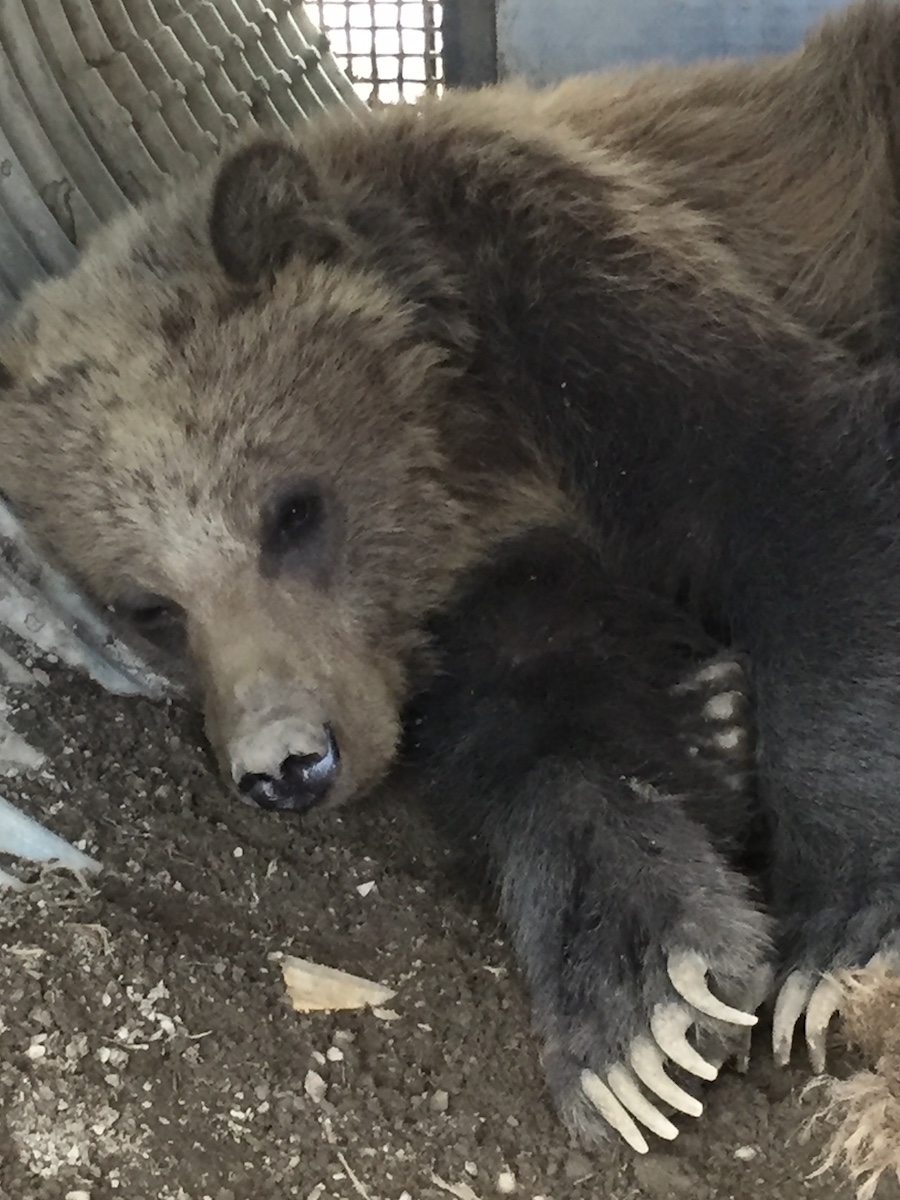Pattern Canada sites have a wide range of flora and fauna, and one in particular has an entire forest of animals ranging from big to small. David Durrant, Market Development and Stakeholder Relationship Manager at Meikle Wind, describes what it’s like to work alongside bears, moose, and other wildlife in central British Columbia.
When people discover you work at Meikle Wind, the conversation usually gets around to asking about the bears. Bears are such fascinating creatures. Like every human, bears are different and unique from one another and must be thought of in this way. As one becomes familiar with the bears at Meikle Wind, you begin to actually see how different they are from one another in appearance, how they act, react, and how they manage themselves. Some bears are shy while others are curious. Some are quick to anger while some bears rarely anger. All bears have their own distinct personalities. Just like us.
Connecting with Wildlife
When people ask about bears and the wildlife at Meikle, it opens a wider conversation about the importance of wildlife and a shared existence with man. Never has this realization been more obvious than it is today.
The United Nations General Assembly proclaimed the term ‘wildlife’ refers to all undomesticated native plants and animals of a region. March 3 is World Wildlife Day. A day to celebrate the world’s plants and animals while raising awareness of issues that impact wildlife.
World Wildlife Day serves to highlight issues such as urbanization, destruction of old-growth forests and wildlife habitats, pollution, and poaching. Everyone is asked to contribute to the conversation.
Every day at Meikle is World Wildlife Day. Ours is a Duty of Care for all the Wildlife in our area.
Working Beside Wildlife
Pattern employees are all global change-makers and realize the importance of wild animals. People have always had an awareness of the consumptive economic importance of hunting or trapping wild animals, but other non-consumptive values must be promoted.
Every day, we attempt to ensure the impact of our operation is minimal. Environmental audits are conducted every time we drive into the park. Prevention vs. Prescription is our thinking.
To protect the animals and their habitat, we work closely with the BC Conservation Officer Service and the Ministry of Forests.

Minnie (shown above) is the smartest cow moose you’ll ever meet. She has figured out that grizzly bears do not like the movement of turbine blades. When harassed by grizzlies, she will stand underneath a turbine where it is safe or in the operations yard, as seen in this picture with baby Eddison, Eddie for short.
Creating Connections
We see the animals so frequently it is hard not to form a familial bond. Naming the animals just seemed to evolve. Over time we discovered that when naming an individual animal, we not only choose how we want to represent that animal but also how others may represent and perceive it: we lay the foundations of representations and perceptions to come. Naming a wild animal is a powerful tool of control.
Some of the usual suspects at Meikle are Edgar and Poe, a pair of ravens named for the world-renowned poet, that have made Meikle their home the past six years. Alan is a small house sparrow who sits outside our windows on most rainy days. Then there is Veronica, a female grizzly, Minnie the moose and baby Edison, Snowball the lynx, Bob the black bear, Mike the mule deer, and last but not least is Maximus a massive male grizzly. There are of course all kinds of other wilderness friends, elk, rabbits, bobcats, cougars, chipmunks the list goes on. One thing for sure is that if they make Meikle their home, they get a name.
It’s All About Respect
Of utmost importance is that when we are respectful to the animals, they are respectful back. When observed from a distance, it is clear wild animals are selfless and loving to each other. It’s our privilege to give them the respect, care, and kindness they deserve.
In order to limit bear-human conflict, all working at Meikle must take annual environmental training and the annual site orientation. Workers are trained that when they see a bear feeding on the side of the road they are to stop well back to give the bear a chance to leave on its own accord. If the bear has not left after five minutes, we ask the driver to use his vehicle horn to scare the bear away. We want to condition the bears that anytime they see a site vehicle they simply turn their heads to the side and walk into the bush. When conditioned, bears who come out of the bush and see a site vehicle parked near a turbine may again simply turn away and go back into the bush. Conditioning protects the bears and the techs.
From native plants and grizzly bears, to mason bees and the huge variety of life on Earth, this all contributes to our lives and well-being in far more ways than we can realize. We need wildlife for our survival, well-being, and prosperity.


